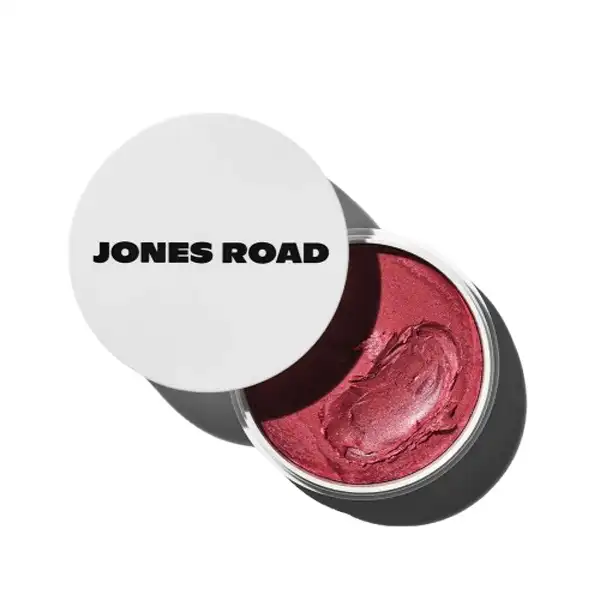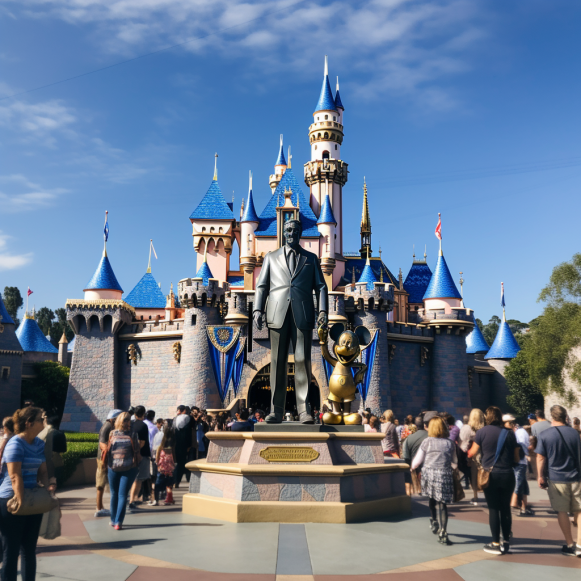AppLovin has rocketed to a $100 billion valuation. Some industry insiders are skeptical its run can last.

AppLovin, led by CEO Adam Foroughi, has rocketed to an over-$100-billion valuation, fueled by a recent push into e-commerce ads.
Shares in the mobile ads and gaming company AppLovin have been running wild — and advertising industry insiders have a lot of questions.
AppLovin entered the Nasdaq 100 in November, with its market value surpassing the $100 billion milestone and shares up more than 780% so far this year. It’s a remarkable ascent for any company, but especially for one that had flown fairly under the radar until recently, even within the ad industry itself.
At its current valuation, AppLovin dwarfs even The Trade Desk, long considered adtech’s star performer, which has a market capitalization of around $65 billion.
AppLovin — which helps app developers make money through advertising and find new users through ads — has grown its share to 42% of the mobile gaming market, per analysts at Piper Sandler.
But there’s one key new development that’s driving its stunning stock run: e-commerce.
Bullish analysts say AppLovin has room to grow further and do for e-commerce marketers what it has for gaming companies, taking on Meta in the process.
“In all my years, it’s the best product I’ve ever seen released by us, fastest growing, but it’s still in pilot,” AppLovin CEO Adam Foroughi said of the company’s new e-commerce product on an earnings call last month.
With its stock riding high, some industry insiders also think AppLovin could make a transformative acquisition that would make it a household name.
Still, others in the ad industry say AppLovin’s business model deserves some skepticism amid its meteoric rise.
22V Research analyst John Roque wrote in a recent note that AppLovin was the most overbought stock in the Russell 3000.
AppLovin declined to comment on a list of detailed questions about its business.
Investor enthusiasm goes stratospheric
Wall Street’s interest in AppLovin soared this year as the company unveiled a plan to go after a new target customer outside the mobile gaming community: e-commerce advertisers.
The move opened up a total addressable ad revenue opportunity of around $120 billion, two to three times the size of the $40 to $50 billion mobile games user acquisition market, according to Macquarie Equity senior analyst Tim Nollen.
Nollen recently raised the firm’s target share price for AppLovin to $450 from $270, citing its e-commerce push.

Jones Road Beauty has been an early tester of AppLovin’s e-commerce advertising offering.
Cody Pfloker, chief marketing and revenue officer for Jones Road Beauty, which is testing AppLovin, said direct-to-consumer advertisers are excited by the prospect of a new player in the market.
“Meta has been the dominant customer acquisition channel for brands and while other platforms have come up like TikTok a few years ago, none are either as efficient or scalable,” Pfloker said. “Nothing has been able to dethrone Meta.”
AppLovin says it can reach a potential audience of 1.4 billion daily active users across mobile apps and connected-TV devices — an audience comparable to Meta or Google’s apps.
Pfloker said part of the appeal is that e-commerce advertisers can easily repurpose their Meta ads into ads for AppLovin’s mobile games and other apps.
AppLovin is only inviting e-commerce advertisers that spend upward of $20,000 a day on Meta ads to try its product, and it’s incentivizing some of those buyers with $10,000 ad credits, multiple industry insiders told B-17. They, like some others in this story, requested anonymity to preserve business relationships; their identities are know to B-17.
Prescient AI, a marketing measurement company, ran an analysis in October that found AppLovin delivered a 1.5 times higher return on ad spend for its customers than Meta and Google Adwords, on average.
“A pretty startling thing is happening,” said Will Holtz, VP of strategy and operations at Prescient AI. The top spenders are spending 25% to 30% of their budgets on AppLovin, he said, something Prescient hasn’t seen before on a new channel, except for something like TV where people bulk up spending over the holidays.
What’s more, Holtz added: “They’re spending incremental dollars; they’re not just shifting budget away from channels like Meta.”
It’s worth noting that the ads are full-screen and can’t be skipped, which also likely boosts some performance metrics compared to other platforms. The results are also early and could fluctuate as more advertisers come on board.
Out-Googling Google
Despite the enthusiasm from some customers, others in the digital ad community have raised concerns about AppLovin.
Some industry insiders attribute AppLovin’s performance to its cornering of every part of the mobile app ad transaction.
AppLovin operates AppDiscovery, the technology that advertisers use to buy the ads; the MAX mediation technology developers use to sell their ads; and the ALX exchange that connects the two. It also has Adjust, its ad measurement platform, and AXON, an AI engine designed to improve the performance of its ads.

AppLovin, whose Palo Alto HQ is pictured here, grew annual revenue by 17% to $3.3 billion last year.
This could give AppLovin a unique view of the market and allow it to see what different advertisers and buying platforms are bidding. Theoretically, AppLovin could use this intelligence to refine its own ad bidding strategies.
“It’s one company for monetizing your app, growing your userbase, and then grading its own homework,” a mobile ad veteran told B-17. “They say there’s a firewall and ‘we don’t talk,’ but it’s hard to prove otherwise.”
If that sounds familiar, it’s because it’s similar to how people often describe the approach that helped Google dominate advertising on the web. A judge in Google’s adtech antitrust trial is currently weighing whether that strategy, as well as its use of other auction tactics, amounted to Google operating an illegal monopoly. Google denies this and has said the adtech market is fiercely competitive and that its innovations have brought benefits to consumers, publishers, and advertisers.
Jeromy Sonne, the founder of marketing AI technology company Simbiant, has been monitoring the early AppLovin e-commerce results.
He said he’d seen an “extremely high correlation” between when AppLovin sees a spike in conversions and when Meta sees an increase in ad spend. He said he hadn’t seen a similar trend when comparing Meta and Google or AppLovin and Google.
He said that made him wonder if AppLovin was driving real incremental value or whether its campaigns were just reaching the exact same audience as Meta in some way.
He said he’d also seen a “concerning overlap” where Shopify sales purportedly driven by AppLovin have a very high geographic overlap with where Meta ad website traffic was coming from.
Separately, Prescient AI’s analysis found that brands spending between 25% to 30% of their digital ad budgets on AppLovin acquired fewer incremental new customers than brands in the 5% to 10% range. While reacquiring some old customers isn’t necessarily a bad thing, the finding raises questions about the appropriate level of spending advertisers should devote to AppLovin, Prescient AI’s Holtz said.
Other advertisers have questioned why AppLovin doesn’t share granular data about exactly where their ads ran.
“It’s a little bit of a black box — we have no idea where our ads are appearing,” Pfloker said of AppLovin. “There’s a lot to be excited about, but there’s a lot to be skeptical about.”
Could AppLovin become SnapLovin?
AppLovin recently paid more than $150 million to add developer Zynga’s portfolio of games to its MAX ad exchange as part of Zynga’s divestment of its adtech platform Chartboost, three people familiar with the matter told B-17. This boosted AppLovin’s already huge audience of gamers.
A spokesperson for Zynga owner Take-Two declined to comment.

AppLovin recently signed Zynga’s portfolio of games, such as Farmville 2, onto its MAX ad exchange.
Some in the industry think AppLovin could make an even bigger move. The company recently sold $3.5 billion in bonds, which Bloomberg reported were to pay down debt “and for general corporate purposes.”
Could that include an acquisition?
Alex Merutka, an early AppLovin employee who now runs his own digital marketing company, Craftsman+, thinks AppLovin should make a bid for a social network — a particularly valuable sector of apps because users tend to be logged in, visit often, and share useful data.
People who use mobile games don’t usually hand over data like phone numbers or email addresses, vital pieces of information for marketers to help connect their ads to outcomes, and to retarget users with ads.

AppLovin CEO Adam Foroughi is currently positioned at No. 216 on the Bloomberg Billionaires list.
AppLovin is already trading at a larger market capitalization than Snap, Pinterest, and Reddit combined.
Years ago, Snap held informal, early-stage talks about potentially acquiring AppLovin, a person familiar with the matter told B-17.
Perhaps the roles could be reversed this time around. While Snap posted a revenue growth bounceback in its latest quarter, it’s struggled to keep momentum amid fierce competition from the likes of TikTok. AppLovin could theoretically help optimize Snap’s ad platform for performance advertisers to better compete with Google and Meta.
“If Adam was in control, Snap could be a $100 billion business — a $200 billion, $300 billion company — and AppLovin would be stronger too,” Merutka said, referring to AppLovin CEO Adam Foroughi. “There’s a lot of opportunity there.”
However, AppLovin execs said onstage at the Nasdaq Investor Conference earlier this month that M&A wasn’t a near-term priority and that the company was keeping a close eye on its head count and margins.
“It’s much harder than people realize, and it’s exceptionally hard for a company that’s structured like us,” Foroughi said of M&A and the difficulty of absorbing different company cultures, according to a transcript provided by the market intelligence platform AlphaSense.






